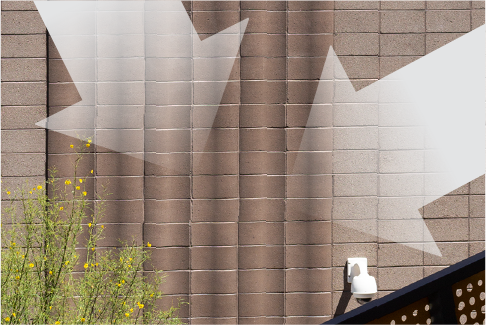Concrete materials are known to absorb and sequester atmospheric carbon. Research1,2,3,4 has shown the carbon uptake, or carbonation, of concrete occurs during its service life and after its demolition, and in its repurposing as recycled aggregate. Combined, concrete can absorb more than 50% of its carbon impact, equal to the CO2 released by its cement’s calcination process during manufacturing.

Correctly applying this attribute in life cycle accounting would show the actual impact of concrete is substantially less than has been commonly reported. The Global Carbon Project, 11 November 20225, reports global cement emissions for 2021 at 1.67 GtCO2, but also reports “cement carbonation” at -0.84 GtCO2, reducing the net cement emissions to 0.83 GtCO2.
So, while typical narratives repeat the "cement is 8% of global emissions", the reality is 4.5%, and accounting for carbonation reduces cement's global percentage to 2.2%. The U.S. portion is 0.11%. For more details, see Timber and Concrete Emissions: The Inequalities in GHG Reporting.
Concrete masonry units (CMU), with its various textures, has carbon absorption rates much higher than that of wet-cast concrete. CMU is installed using mortar, which has also been shown to have high carbon uptake rates.
A recent ASTM paper, Conceptual Test Protocols for Measuring Carbon Sequestration of Manufactured Dry-Cast Concrete Products6, investigated the carbon sequestration of CMU in just the weeks following manufacture. The findings demonstrated substantial absorption of atmospheric CO2 in a short period of time.
| Test at | Average CO2 uptake (lb/cu ft) |
| 4 weeks | 1.30 |
| 13 weeks | 1.73 |
| 26 weeks | 2.12 |
To put the 26-week value in perspective, convert the 2.12 lb/cu ft into a wall area context at square feet:
| 0.572 lbs. | per typical net volume of an 8x8x16, which equates to: |
| 0.644 lbs. | per square foot of wall |
| 100,000 sq. ft. | example wall area of a project |
| 64,395 lbs. | of absorbed/sequestered CO2 in the first 26 weeks after CMU manufacture |
Note that with CMU’s very low cement content, relative to wet-cast concrete, the more than half-pound per unit offset of impact is considerable. Especially when you consider at 26 weeks, its lifespan is just beginning.
The project participants in the paper intend to continue testing of the sampled lots for some time, updating findings along the way. Given the known science and numerous studies of concrete in general, there is every expectation the cumulative carbon uptake amount will continue to increase through the CMU’s entire lifecycle.
There's More to Concrete Masonry
The inherent benefits of CMU are substantial, yet Angelus Block has lowered CMU-related CO2 even further with CarbonKind™ Low Carbon CMU.
The tremendous improvements offered with CarbonKind CMU provide a potent element to an optimized concrete masonry wall utilizing high SCM masonry grout. They're a powerful carbon-cutting combo. See more:
Concrete Masonry: An Optimized Low Carbon Wall
Masonry Grout: Cement Replacement Studies
1 How concrete can become a carbon sink https://www.ri.se/en/our-stories/how-concrete-can-become-a-carbon-sink
2 Concrete as a Carbon Sink? The popular building material might not be as detrimental to the environment as once believed. https://www.architectmagazine.com/technology/concrete-as-a-carbon-sink_o
3 Guo, R., Wang, J., Bing, L., Tong, D., Ciais, P., Davis, S. J., Andrew, R. M., Xi, F., and Liu, Z.: Global CO2 uptake by cement from 1930 to 2019, Earth Syst. Sci. Data, 13, 1791–1805, https://doi.org/10.5194/essd-13-1791-2021, 2021
4 3 Questions: Leveraging carbon uptake to lower concrete's carbon footprint MIT News, https://news.mit.edu/2023/3-questions-hessam-azarijafari-leveraging-carbon-uptake-lower-concretes-carbon-footprint-0331
5 Global Carbon Budget 2022, Global Carbon Project, 11 November 2022. https://globalcarbonbudget.org/wp-content/uploads/GCP_CarbonBudget_2022_slides_v1.0.pdf, and supporting data at https://tinyurl.com/GCB22figs
6 C. Walloch, L. Powers, D. Broton, and J. Thompson, “Conceptual Test Protocols for Measuring Carbon Sequestration of Manufactured Dry-Cast Concrete Products,” in Masonry 2022: Advancing Masonry Technology, ed. B. Trimble and J. Farny (West Conshohocken, PA: ASTM International, 2022), 59–86. http://doi.org/10.1520/STP164020210112
 Concrete Masonry: An Optimized Low Carbon Wall
Concrete Masonry: An Optimized Low Carbon Wall
